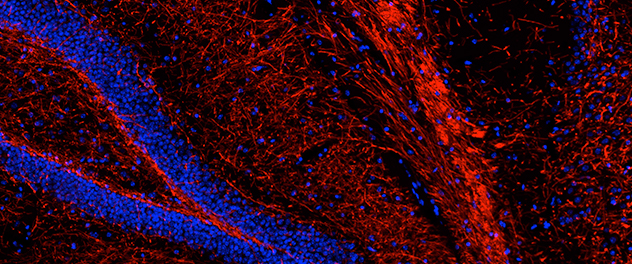Research

Research in the Biology of Aging and Age-Related Diseases Lab focuses on understanding how cellular senescence contributes to aging and age-related diseases.
Cellular senescence in brain aging
Cellular senescence is most often induced as a response to persistent DNA damage and telomere dysfunction, leading to cellular reprogramming including hyperproduction of reactive oxygen species (ROS) and secretion of bioactive peptides, known as the senescence-associated secretory phenotype (SASP).
The definition of senescence has until recently been limited to proliferation-competent cells and tissues. However, the lab's team has demonstrated that post-mitotic neurons in a mouse brain can develop a senescent-like phenotype, but the mechanisms behind this are still unknown.
The work in Dr. Jurk's Lab is focused on elucidating physiological and molecular links driving brain aging and neurodegeneration, with particular focus on the impact of neuroinflammation on age-related cognitive decline. See related research.
Cellular senescence in liver disease
Senescence is a major contributor to age-related tissue degeneration and has been shown to be involved in nonalcoholic fatty liver disease (NAFLD).
The Biology of Aging and Age-Related Diseases Lab has recently shown how cellular senescence contributes to liver disease and how elimination of senescent cells can slow down NAFLD and may even prevent progression of NAFLD to hepatocellular carcinoma (HCC). The research team is optimizing biomarker assays for human liver biopsy samples.
Dr. Jurk's ultimate goal is to expand treatment options by advancing knowledge about nonalcoholic fatty liver disease. See related research.
Cellular senescence in obesity and obesity-related diseases
Obesity is a major concern contributing to many conditions and diseases such as heart disease, type 2 diabetes and cancer, as well as being linked to neurological disorders.
The lab has recently shown that obesity leads to an increased accumulation of senescent cells in the liver, driving fatty liver disease, and causes anxiety-like behavior through impaired neurogenesis due to increased senescent cell burden in the neurogenic niche. Clearance of senescent cells alleviates obesity-related anxiety-like behavior and reduces liver steatosis.
Currently, the team members are investigating the mechanisms driving cellular senescence in a high-fat environment. See related research.